Today happens to be the 101st Birth Anniversary of my all time favourite cinematographer, Jack Cardiff. His uniquely brilliant, colourful aesthetics, in movies like. Powell&Pressburger’s Black Narcissus (1947) and The Red Shoes (1948), Alfred Hitchcock’s Under Capricorn (1949), and King Vidor’s War and Peace (1956), are stunningly splendid, with it’s vivid spectrum of striking colours. His creations on the big screen, are pure art. A massive canvas filled with moving pictures.
 Jack Cardiff was born on the 18th of September, 1914, to a couple of music hall performers. By the age of four, he was already a child artiste, who’d worked in music hall productions as well as a few silent movies. As a child actor he starred in My Son, My Son (1918), Billy’s Rose (1922), The Loves of Mary, Queen of Scots (1923) and Tiptoes (1927). By 15 he started working as a camera assistant, clapper boy and production runner. By 21, Cardiff had graduated to camera operator and occasional cinematographer. Having already worked with Alfred Hitchcock, in The Skin Game (1931), as a clapper boy; soon he got a chance to work with Powell&Pressburger, as a second unit cameraman. Powell&Pressburger were so impressed that they hired him as a cinematographer, and the rest is history.
Jack Cardiff was born on the 18th of September, 1914, to a couple of music hall performers. By the age of four, he was already a child artiste, who’d worked in music hall productions as well as a few silent movies. As a child actor he starred in My Son, My Son (1918), Billy’s Rose (1922), The Loves of Mary, Queen of Scots (1923) and Tiptoes (1927). By 15 he started working as a camera assistant, clapper boy and production runner. By 21, Cardiff had graduated to camera operator and occasional cinematographer. Having already worked with Alfred Hitchcock, in The Skin Game (1931), as a clapper boy; soon he got a chance to work with Powell&Pressburger, as a second unit cameraman. Powell&Pressburger were so impressed that they hired him as a cinematographer, and the rest is history.

Ben Cross and Amy Irving in The Far Pavilions (1984)

Ben Cross and Omar Sharif in a scene from The Far Pavilions
As a little kid, back in the mid-1980’s, I watched The Far Pavilions (1984), a beautiful mini-series, set in India, in the 1800’s. Back then, I had no idea who Jack Cardiff was, but was amazed by the superbly, epic scale, picturesque, television show, which has been tagged as, “Gone With The Wind (1939), of the north-west frontier of India.” I got to re-watch it in my teens, back in the early 1990’s. Thus, even though unaware at the time, this was my very first Cardiff involved show, that I witnessed. And I’ll end up watching quite a few Cardiff’s aesthetic brilliance of the big screen (on the small screen), before I learn the cinematographer responsible for the visual beauty of these great movies.


Moira Shearer in The Red Shoes (1948)

Scenes from The Red Shoes
Still as a kid, towards late 80’s, when I watched The Red Shoes, I was spellbound. The beautiful colour combination, costumes, the respectable art form of the ballet, the story, the movie as a whole, I fell in love with it almost instantaneously. And at the time I didn’t even realise it was an old movie. Especially ’cause I had no idea who the actors were. By then I knew quite a few classic stars, from Charles Chaplin, Laurence Olivier, Cary Grant, Ingrid Bergman, Audrey Hepburn, Elizabeth Taylor, Sophia Loren, Julie Andrews, Henry Fonda, Jane Fonda, Al Pacino et al; so I felt these must be very new actors, who aren’t famous yet. In fact, even now, besides The Red Shoes, am not familiar with the work of Moira Shearer (who was actually a renowned ballet dancer, and had appeared in very few films), Austrian actor, Anton Walbrook, and Marius Goring. The story follows the life of a young ballerina, who becomes the lead dancer in a new ballet called, The Red Shoes, a fairy tale. The movie tells a story within a story. One through the ballet, and the other, the movie plot. I remember this scene, where the lead male character, asks the ballerina, “Why do you want to dance?”, she fearlessly quickly answers with another question, “Why do you want to live?”
I only saw The Red Shoes, once, less than 30 years ago, but I still remember, that scene so well, as if I saw it yesterday. That was the scene, that changes the lead character, played by Moira Shearer, Victoria Page’s, life, in the movie. The ballet sequences were mesmerising, telling a beautifully epic tale of it’s own, and filmed so beautifully. My personal favourite was the one with raggedy clothes, portraying an exhausted ballerina, complimenting the frighteningly beautiful visual effects of the time. Eons before the evolution of CGI.

Scenes from War and Peace (1956)

Scenes from War and Peace

Audrey Hepburn in a scene from War and Peace
The next, was War and Peace, which I watched around the same time, more ‘cause I was already a great fan of Audrey Hepburn by then. A brilliant epic, adapted from Leo Tolstoy’s celebrated novel, War & Peace. With a stellar star cast, including Mel Ferrer, Henry Fonda, Audrey Hepburn, Jeremy Brett, May Britt and Anita Ekberg, this Hollywood adaptation, of a novel based on Napoleonic Wars, especially Napoleon’s invasion of Russia in 1812, happens to be amongst my favourite of epic scale war movies. And again, I recall, how brilliant the cinematography was. Of course the movie mainly focuses on complex relationship and personal maturation, of the three lead characters, and two aristocratic families, on the backdrop of the historical events of the Napoleonic invasion. I got to re-watch War and Peace, as an adult, just over a decade ago, whilst living in London. ’Twas really worth it.
In the 90’s, as a teen, I watched Paul Czinner’s, As You Like It (1936). A pretty good movie adaptation of Shakespeare’s famed comedy. Jack Cardiff worked as a camera operator for this film, starring Laurence Olivier and Elisabeth Bergner. I enjoyed the movie, but I don’t recall much greatness, cinematography wise. Anyway, Cardiff wasn’t responsible for cinematography. Plus this happens to be a Black & White film, and Cardiff was famous for excelling in colourful epics.
Whilst living in Portsmouth, UK, 11 years ago, around this time, most probably to celebrate Jack Cardiff’s 90th Birthday (he was still alive then), one of the British channels, telecast, two of his movies. I already knew about both these films, and had heard about Cardiff. But it was that particular day, 11 years ago, that I got to know who Jack Cardiff was, after seeing these two films, which were shown one after another, that day. Black Narcissus and Under Capricorn. I loved the movie, and learnt a lot more about Cardiff, once I googled him out, back in 2004. And to see he was responsible for the magnificent cinematography, of my childhood films, The Red Shoes and War and Peace as well, was an added bonus. Since then, Cardiff happens to be my all time favourite cinematographer, of yesteryear.

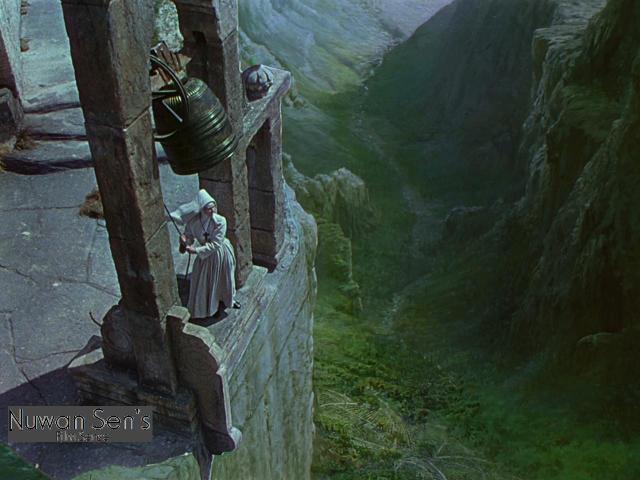
Scenes from Black Narcissus (1947)

Scenes from Black Narcissus (1947)
Cardiff’s work, on Black Narcissus, is undeniably the best I’ve seen till date. Set in the foothills of the Himalayas, near Darjeeling, India, and made as India was on the verge of getting their Independence from the British Raj, it’s another excellent movie, in every way possible, from the narrative, the brilliant cast, the setting, the cinematography, you name it. Starring Deborah Kerr, Jean Simmons (playing an Indian girl named ‘Kanchi’), Flora Robson, Kathleen Byron, David Farrar, Esmond Knight, Nancy Roberts and Sabu Dastagir, it’s a touching story of a group of Anglican nuns living in isolation, who have to ultimately, after being tragic victims of jealousy and lust, have to leave their peaceful life in India, under the British Empire. Jack Cardiff won his very first Oscar, for his beautiful creation of Black Narcissus, under the category, ‘Best Cinematography, Colour’. He was nominated for three more Oscars, twice for colour cinematography, and once for film direction, but never won. In 2001, he was awarded an honorary Oscar, as the ‘Master of light and colour’. Prior to that, in 1995, he was honoured with a lifetime achievement award, by the British Society of Cinematographers. And in Year 2000, Jack Cardiff was also awarded the OBE (Order of the British Empire).

Scene from Under Capricorn (1949), Down Under!
Alfred Hitchcock’s Under Capricorn, is set Down Under, in the depths of the heat and dust of the Australian outback, i.e. Sydney of 1831, a town full of ex-convicts. Starring Joseph Cotten, Ingrid Bergman and Michael Wilding, the movie tells the story of how an Irish gentleman, who visits Australia, comes across his childhood friend, now a married woman, who’s suffering from alcohol abuse, and helplessly watches her decent into madness. Amazingly George Cukor’s Gaslight (1944), a superb piece of noir, too dealt with a married woman’s (played by Bergman as well) decent into madness, and Cotton played, a sympathiser, who saves her from her murderous husband, the man responsible for driving her insane. Under Capricorn, was Hitchcock’s second film made in Technicolor, after Rope (1948).


Peter Ustinov as Hercule Poirot, with the Sphinx in the background, in Death on the Nile (1978)
Back then I also got to watch, Death on the Nile (1978), a very good adaptation of crime writer, Agatha Christie’s novel. Which was a really good movie, though not great. But again the cinematography capturing ancient Egyptian monuments was simply brilliant.

Scenes from Delhi (1938)

Scenes from Delhi (1938), in Connaught Place, New Delhi, India.

Scenes from Delhi (1938)
Five years ago, I saw the documentary short film, Delhi (1938), online, on the BFI (British Film Institute) page, on the Youtube website. Another colourfully breathtaking insight of Old and New Delhi, of the 1930’s, showcasing the beautiful historic architecture, the modern wide roads, and Indian attire, of the period under the British Raj, and captured to perfection by Jack Cardiff. One of the best short documentaries I’ve seen, and this 10 minutes of reel is definitely worth checking out.
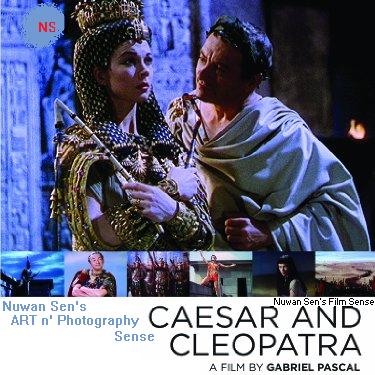

Scenes from Caesar and Cleopatra (1945)
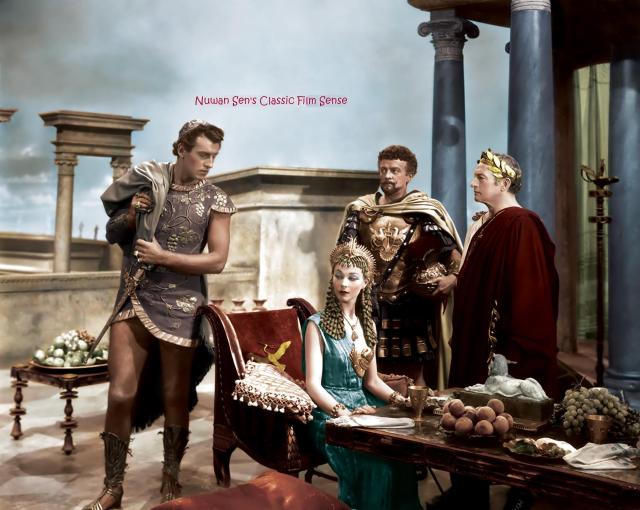
Claude Rains, Vivien Leigh and Stewart Granger in a scene from Caesar and Cleopatra (1945), based on a play by George Bernard Shaw.

Black & White still, with Claude Rains and Vivien Leigh, in the technicolor film, Caesar and Cleopatra
Then there was Caesar and Cleopatra (1945), starring Claude Rains, Vivien Leigh and Stewart Granger. Another classic film with breathtaking cinematography, based on an acclaimed play by George Bernard Shaw. Yet, Caesar and Cleopatra, is no where near as great, as some of the other movies mentioned above (cinematography wise), but still it’s another excellent cinematic experience, altogether. I watched this online as well, on Youtube, a few years ago. Sadly that’s the last of Cardiff’s films I saw, and I don’t own a single. All these movies of his, in which he worked as a cinematographer, is no doubt worth, adding to my home library, collection of movies.

A documentary titled, Cameraman: The Life and Work of Jack Cardiff (2010), was released, five years ago. Being a great fan of Cardiff, am really keen on checking it out. It chronicles his career of over seventy years, as a cinematographer, reviews his magnificent work, and details how he ended up mastering the process of Technicolor in Cinema of a bygone era.
Besides being a maestro in cinematography, Cardiff was also a film director. But from his directorial ventures, I’ve only watched, to my memory, My Geisha (1962), starring Shirley MacLaine, Yves Montand, Edward G. Robinson and Robert Cummings. That too, I watched, back in the 1980’s. My Geisha, was a hilarious comedy about an actress, Lucy Dell (MacLaine), who disguises herself as a Japanese Geisha, to bag the lead role, unaware to her husband (Montand), in her husbands new directorial venture, inspired by Giacomo Puccini’s, renowned Opera, Madame Butterfly.

Some of Jack Cardiff’s directorial ventures: Sons and Lovers (1960), My Geisha (1962) and The Girl on a Motorcycle (1968).
Being a fan of D.H. Lawrence, I’d really love to watch Cardiff’s adaptation of Sons and Lovers (1960), starring Trevor Howard, Dean Stockwell, Wendy Hiller and Mary Ure. Sons and Lovers, was Cardiff ’s very first nomination, for the ‘Best Director’ Oscar. Ironically it won one Oscar, for ‘Best Cinematography, Black-and-White’, for which he wasn’t responsible for. From Cardiff’s other works as a cinematographer, am really keen on watching, The African Queen (1951), Humphrey Bogart and Katharine Hepburn, The Prince and the Showgirl (1957), with Laurence Olivier and Marilyn Monroe, and Crossed Swords (1977), with Oliver Reed, George C. Scott, Rex Harrison, David Hemmings and Mark Lester, to name a few.
All of Cardiff’s works I mentioned here as a cinematographer, are excellent films as a whole, except for Under Capricorn and Death in the Nile. Alfred Hitchcock’s Under Capricorn, is not necessarily Hitchcock’s best film, yet it’s still a near excellent noir flick. And John Guillermin’s adaptation of Agatha Christie’s famed novel, Death in the Nile, though not the best adaptation of one of her novels, is still a very good crime movie.
In memory of Jack Cardiff (1914 – 2009), who shall forever be remembered for his masterworks in colour, especially at a time, when colour movies were a rarity, back in the 1930’s & 40’s. I’d love to watch more of his cinematic wonders, be it as a cinematographer, or a film director.
Nuwan Sen’s Film Sense
Nuwan Sen’s ART Sense
















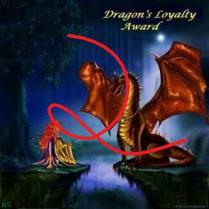


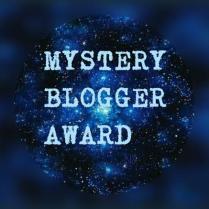
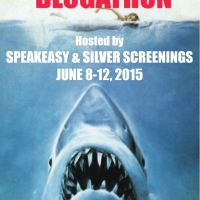
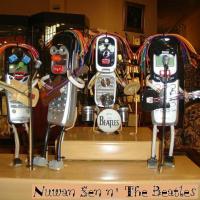

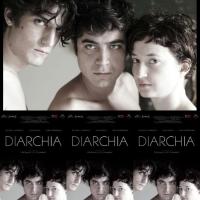
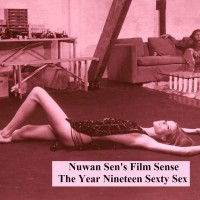
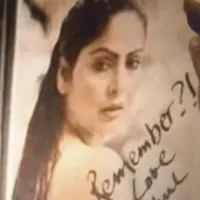
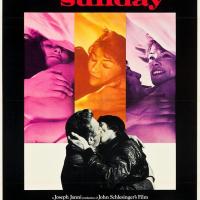
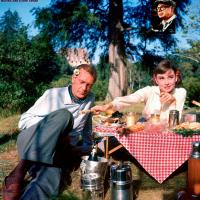
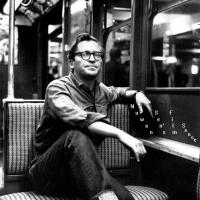
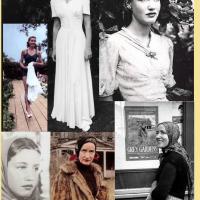
Jack Cardiff talking about photographing Hollywood icon Audrey Hepburn.
Audrey… Oh, she had a wonderful face anyway. It was great to photograph her. She had a wonderful way of walking, and such beautiful eyes as you see here. I guess she got the deportment from ballet, she had a lot of training in ballet. And she was so photogenic. Marvelous.
Thanks for posting a Cardiff quote, on my all time favourite actress.
Wonderful tribute to Jack Cardiff, and you’ve posted some good images here that reflect his amazing work.
I watched the short documentary on Delhi you mentioned, and it is beautiful. Thanks for mentioning it! 🙂
Yes, it’s amazing isn’t it. Am glad you enjoyed the short film, Delhi (1938).
And thank you, there were so many more stills I wish I could add, but I didn’t want to overdo it. Maybe next year I’ll pay him pictorial tribute.
Isn’t The Red Shoes the most visually beautiful film ever? And we’ve got Jack Cardiff to thank! I didn’t realise he worked in War and Peace and Caesar and Cleopatra, also beautiful movies. Great post 😉
Thanks for the kind comment,
Le
It sure is! I watched The Red Shoes & War and Peace, as a kid, and I didn’t even know who Cardiff was at the time.
Have you seen Black Narcissus? It’s simply brilliant. That’s no doubt Cardiff’s best artwork. I highly recommend it, especially for the cinematography.
Thanks!!!!!!
A fascinating, creative man who left a beautiful legacy for us to enjoy. You truly did Cardiff justice with this article.
Thank you! He truly was a genius!!!